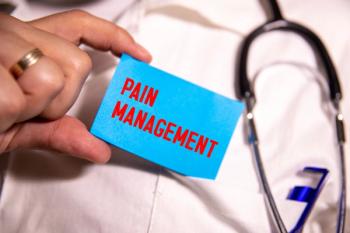
AJPB® Translating Evidence-Based Research Into Value-Based Decisions®
- January/February 2015
- Volume 7
- Issue 1
Trends in High-Cost Generic Drug Utilization and Spend
The prevalence and proportion of spend on high-cost generic drugs is examined.
Traditionally, generic drugs have been viewed as low-cost alternatives to more costly branded products. While generic drugs often are cost-saving, the rising price of generic drugs has received considerable press in the past year.1-4 Instead of generic drugs getting cheaper over time, the median price change was 0% with half of all retail generic drugs becoming more expensive over a recent 12-month period.2 In this same analysis, 1 out of 11 generic drugs was found to have more than doubled in cost, with some increases exceeding 1000%; albendazole, digoxin, and doxycycline are examples of generic drugs that have skyrocketed in price despite having been available for many years.1
The cause of the rising costs of generics is complex and multifactorial, and includes the transfer of the rights of a drug to a new company, corporate consolidation, shortages of raw materials, and manufacturing issues.5 In the case of digoxin, the dramatic price increase coincided with a number of manufacturers exiting the market, leaving only 2 companies manufacturing the drug.3 Experts report that 4 or 5 generic companies need to be in the market for significant price decreases to occur.3 Unfortunately, US antitrust laws protect customers only from price-fixing among competitors, not legal market monopolies1 ; there is, however, some concern that some generic manufacturing monopolies may violate US law. The Securities and Exchange Commission issued subpoenas to 2 manufacturers of generics on November 3, 2014, as part of an investigation into antitrust law violations and generic drug pricing.6
While manufacturers may leave the market for a particular generic drug for many different reasons, they cannot quickly enter new generic drug markets, to fill an available “vacuum”—this is a barrier to keeping generic drug costs low. The response time for an abbreviated new drug application for generic drug approval has been reported to exceed 40 months, with the FDA having a recent backlog count of 2800 applications.7,8 The FDA aims to reduce the backlog by 90% and the application review times to 10 months by 2017.9 However, these aggressive goals may be difficult to achieve due to the severity of the backlog.8
In early 2014, the National Community Pharmacists Association sent letters to the leaders of the US Senate Committee on Health, Education, Labor & Pensions and the US House of Representatives Committee on Energy and Commerce, requesting an oversight hearing, citing increases of 600%, 1000%, or more in pharmacy acquisition prices for essential generic drugs.10 A Congressional investigation was announced in October 2014, with the first hearing occurring in November 2014. All invited executives of generic manufacturers declined to testify4; subsequently, members of the Senate and House of Representatives announced their intent to propose legislation demanding rebates to Medicare and Medicaid if the prices of generic drugs rise faster than the rate of inflation—a policy that is already in place for branded drugs.4 Without new legislation, the costs of generic drugs are likely to continue to rise. The objectives of this analysis were to quantify the trend in high-cost generic spend and to quantify the prevalence of high-cost generic drug use in a large insured population.
METHODS
An observational, descriptive analysis was conducted using de-identified pharmacy fill information from the research database of MedImpact Healthcare Systems, Inc, a pharmacy benefit manager that manages pharmacy benefits for more than 50 million lives globally. Data used for this study was limited to commercial plans (health maintenance organizations and self-funded plans) and Medicaid and Medicare Part D plans in the United States. Per member per month (PMPM) drug spend was determined for generic drugs costing $50 or more for a 30-day supply (high-cost generics [HCGs]) and generic drugs costing less than $50 per 30-day supply (other generics) for 6-month increments from July 1, 2012, through December 31, 2014. Generic drug spend included the total cost of the drug (plan-paid plus member-paid). The proportion of generic fills and generic spend that were due to HCGs were quantified for each line of business during 2014. Analyses were performed using SAS version 9.3 (Cary, North Carolina).
RESULTS
HCGs comprised 13.8% of all generic fills and 54.1% of total generic spend across all lines of business in 2014. Greater proportions of HCG fills were seen in commercial lines of business (HMOs, 15.6%; self-funded plans, 13.8%) compared with the government lines of business (Medicare Part D, 10%; Medicaid, 11.8%) (Figure 1). HCGs accounted for a large proportion of generic drug costs in all plan types, ranging from 47% (Medicare Part D) to 59.2% (self-funded plans) of total generic spend.
The HCG PMPM spend across all lines of business increased from $9.17 PMPM in the second half of 2012 to $12.20 PMPM in the second half of 2014, an average increase of 16.5% annually (Figure 2). The PMPM costs for other generic drugs (less than $50 per month) remained relatively stagnant over the same time period with an average annual increase of —0.1%. The increase in HCG PMPM spend is due largely to the increased costs of HCGs, as costs increased at a faster rate than the increase in number of fills (data not shown). The proportion of HCG fills increased an average of 1.7% per year, and the proportion of total generic spend on HCGs increased an average of 7.5% per year.
DISCUSSION
Although HCGs account for a relatively small proportion of fills, the total costs are significant, accounting for more than half of total spend on generic drugs during 2014. Without aggressive management on the part of plan sponsors or pharmacy benefit managers, the current trend in HCG spend is likely to continue in the coming years. Fortunately, the opportunity exists to mitigate the high spend, as many HCGs have reasonable cost-saving alternatives. (Examples of HCGs and potentially appropriate alternatives are listed in the
Table.
) HCG drug costs may be many times greater than for the lower-cost generic alternative. For example, using the national average drug acquisition cost for Medicaid beneficiaries, the conversion of combination amlodipine/atorvastatin tablet to separate amlodipine and atorvastatin tablets could save up to $156 per month.11 Decision makers will need to consider if various HCGs are worth the additional costs when lower-cost alternatives are available.
A recent editorial in The American Journal of Managed Care addressed the increasingly common strategy of placing “higher-cost generic drugs” on a higher co-pay tier.12 The authors expressed concern that many of these “nonpreferred” generics include first-line treatment in a variety of diseases, making these conditions effectively “nonpreferred.” Also, the placement of highly effective and widely used generic drugs on a nonpreferred tier based solely on cost may lead to decreased adherence, poor outcomes, and increased costs elsewhere in the system when there are no therapeutically equivalent “preferred” alternatives from which to choose. It is reasonable that there should be nonpreferred generic drugs only when there are therapeutically equivalent medicines on formulary.
In a sample of insurers examined, not all plans with 2 generic tiers had preferred low-cost alternatives in all of the conditions examined.13 Greater savings can be achieved through the identification of lower-cost alternatives; the potential plan savings from patients switching to lower-cost alternatives often far exceeds the plan savings that can be achieved solely by cost-shifting in raising the co-pay. In addition to co-pay incentives, educational outreach to providers and patients would enhance plan savings because changes in therapy are more likely if patients and providers are informed regarding which generic drugs are lower in cost in addition to co-pay incentives.
CONCLUSIONS
The various factors contributing to rising generic drug prices are unlikely to resolve in the coming years. Plans can expect generic plan spend and drug price inflation to continue, although it is difficult to predict which generic drugs will become expensive and when. Strategies to convert patients from HCGs to lower-cost, clinically appropriate alternatives are likely to be more cost-saving than increasing patient cost share alone.
Articles in this issue
over 10 years ago
Meaningful Patient Engagement: Can We Agree on a Framework?almost 11 years ago
AJMC Panel Discusses the State of Mental Healthcare Post ACAalmost 11 years ago
Medication Management: Measuring What Mattersalmost 11 years ago
Narrowing ChoiceNewsletter
Stay informed on drug updates, treatment guidelines, and pharmacy practice trends—subscribe to Pharmacy Times for weekly clinical insights.




















































































































































































































